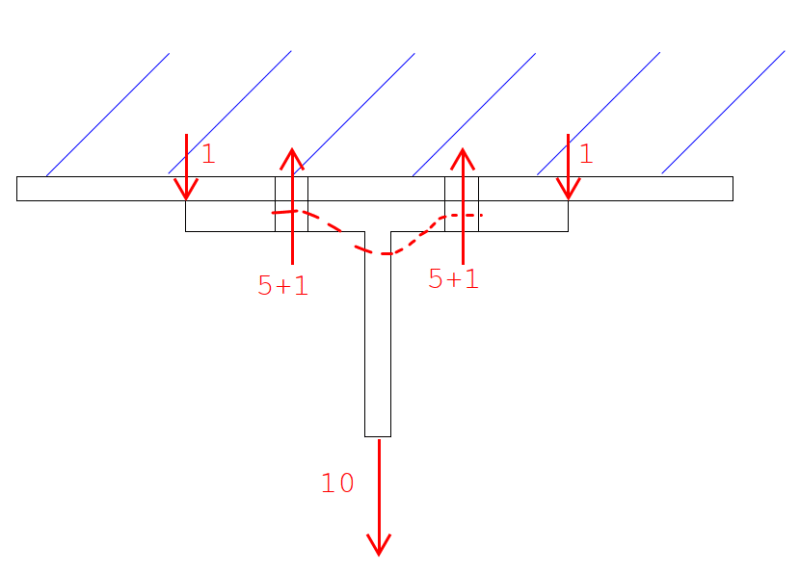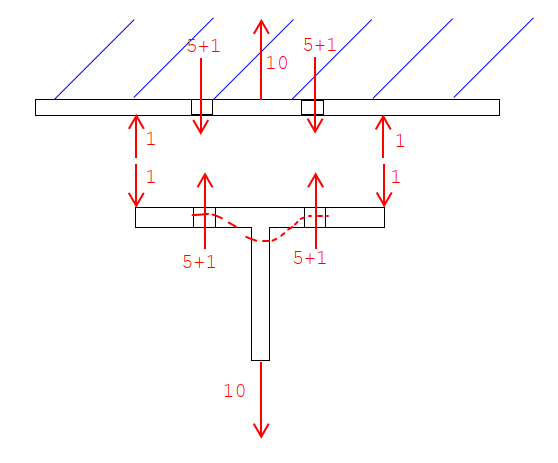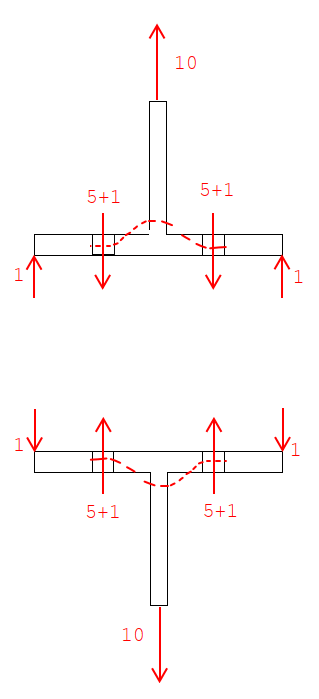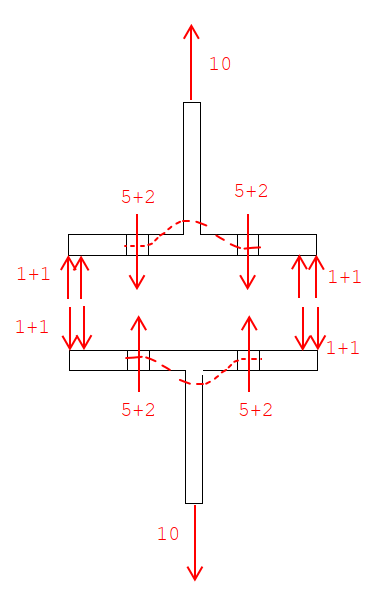Lets say you have two intersecting beams bolted flange to flange, where the upper beam is supporting the lower beam. You check prying for both beams, and both have resulting prying forces due to their thin flanges... Would the prying forces for both beams be additive to bolt tension? Or would just the worst case prying force be added to bolt tension?
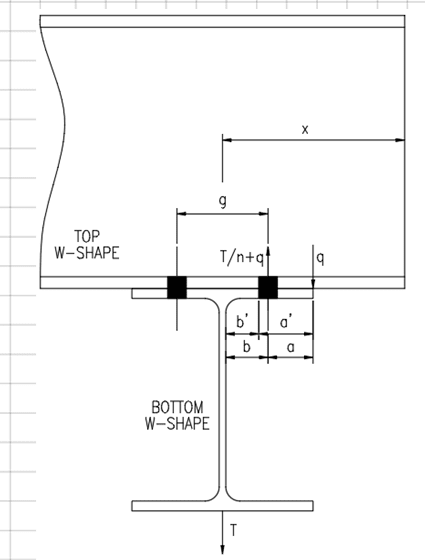


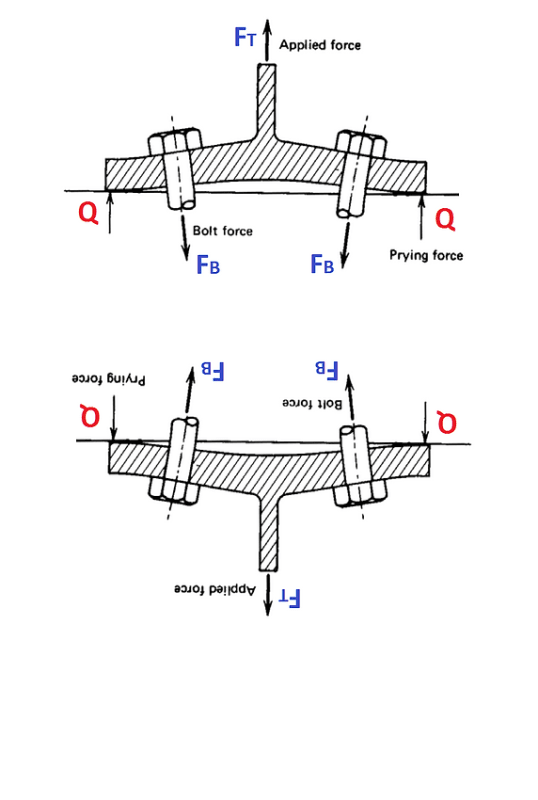
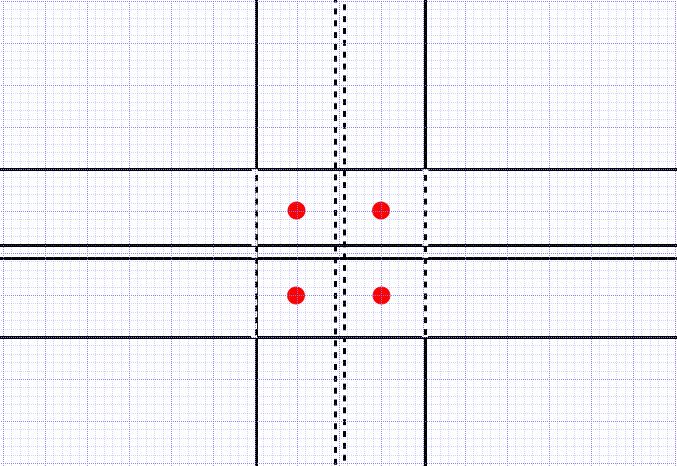
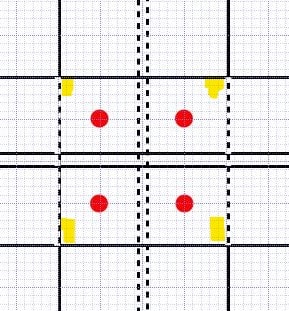
![[tiphat] [tiphat] [tiphat]](/data/assets/smilies/tiphat.gif)
